|
|
|
Sort Order |
|
|
|
Items / Page
|
|
|
|
|
|
|
| Srl | Item |
| 1 |
ID:
092006
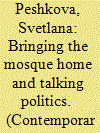

|
|
|
|
|
| Publication |
2009.
|
| Summary/Abstract |
In this article I argue that domestic space has to theorized as an important center of religious practice and socio-political activism. Born-again and devout Muslim women in the Ferghana Valley (Uzbekistan) use domestic space as an important sacred place for religious abservance and socialization equal to the mosques. This sacred place has a special meaning for born-again and devout Muslim as it carries a promise of personal and social change. In the context of religious and political persecution by the Uzbek state, domestic space is experienced as a politically safe place and as a critically important site of socio-political criticism and activism, as some intimate in-house discussions about religious, political, and social oppression take a form of public protest on the streets.
|
|
|
|
|
|
|
|
|
|
|
|
|
|
|
|
| 2 |
ID:
140101


|
|
|
|
|
| Summary/Abstract |
This article explores the changing use and management of domestic space and socio-spatial relationships constructed in a Pakistani rural setting. It offers a case study which highlights the central position of domestic space as a residential and social unit in rural Pakistan. It discusses how domestic space is appropriated in multiple ways into a social unit through social practice. Given that changes in the physical structure of any place lead to negotiation of social relationships, it is shown how recent modifications in design and structure of houses are indicative of, and to some extent facilitate, social change in rural Pakistan.
|
|
|
|
|
|
|
|
|
|
|
|
|
|
|
|
| 3 |
ID:
187866
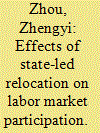

|
|
|
|
|
| Summary/Abstract |
The urbanization of China has been accompanied by large-scale state-led relocation (SLR) programs. This paper studies the effects of urban SLR on labor market participation. With three waves of China Household Finance Survey (CHFS), we find that urban SLR reduces labor market participation, on both the extensive margin and the intensive margin. The reduction is stronger for females, and there is some substitute effect between husbands and wives. The reduction is also stronger for individuals who are elder and less educated, and who choose lump sums of monetary compensation. Finally, we find no evidence that urban SLR experience stimulates business creation.
|
|
|
|
|
|
|
|
|
|
|
|
|
|
|
|
| 4 |
ID:
095690
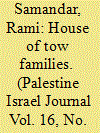

|
|
|
| 5 |
ID:
126044
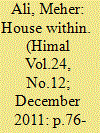

|
|
|
|
|
| Publication |
2011.
|
| Summary/Abstract |
Our car comes to a halt a few metres from a main crossing in Turiaganj, also known as Victoriaganj. At first we cannot locate the house, so we climb up a few flights of stairs to a row of shops. There, a shopkeeper points straight ahead and, opposite us, behind shops packed together like a deck of cards, a haveli rises. From afar, it almost seems like a child's sandcastle, with none of the frills commonly associated with havelis of North India. Instead, it seems to have been inspired by gothic architecture, two towers on either side of the conical façade rising up. Crescent-shaped swirls like half-drawn flowers are engraved on their arches, and perpendicular pillars are topped with football-shaped concrete blocks. A plaque above the arch of the left tower reads 'Adabistan' - the abode of literature. As we enter, the haveli greets us with LIVE AND LET LIVE carved along the roof's boundary wall.
|
|
|
|
|
|
|
|
|
|
|
|
|
|
|
|
| 6 |
ID:
102641
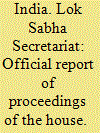

|
|
|
|
|
| Publication |
New Delhi, Lok Sabha Secretariat, 2009.
|
| Description |
10p.
|
| Series |
Parliamentary procedure abstract series; 35
|
|
|
|
|
|
|
|
|
|
|
|
Copies: C:1/I:0,R:1,Q:0
Circulation
| Accession# | Call# | Current Location | Status | Policy | Location |
| 055718 | 328.404/IND 055718 | Main | On Shelf | Reference books | |
|
|
|
|
| 7 |
ID:
172439
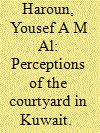

|
|
|
|
|
| Summary/Abstract |
The courtyard was once found in every house in Kuwait. It was a multi-purpose open space where the entire family would gather and socialize. Some courtyards had a tree or shrub, and most would have a well. This all changed after the discovery of oil. In the 1950s Kuwait underwent rapid and unprecedented urbanization and within a decade was transformed from a small shaikhdom to a modern regional metropolis. Kuwaitis were forced into a new lifestyle. The Kuwaiti house changed from the courtyard house, sustainable, private and inward-facing, into the modern villa, full of new technology, and facing outward toward the street. In this study, the courtyard is used as a vehicle to examine a number of socio-cultural, economic and political aspects of the move towards modernity in the domestic built environment and away from the vernacular and sustainability. Investigating several questions that have been raised in prior research, this study aims to identify the qualities and uses of the courtyards that people might value and use in the contemporary house. A mixed-method approach has been employed to provide qualitative data to support and complement quantitative findings. The article’s ultimate aim is to add to our understanding of how how people have dealt with and adapted to the collision between traditional concepts and modernity. Among the findings is the existence of a surprising disconnect between past realities and current perceptions, even about what a courtyard is.
|
|
|
|
|
|
|
|
|
|
|
|
|
|
|
|
| 8 |
ID:
101435
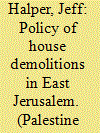

|
|
|
| 9 |
ID:
102071


|
|
|
| 10 |
ID:
161834
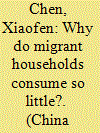

|
|
|
|
|
| Summary/Abstract |
Exploring data from the migrant and urban household surveys of the Chinese Household Income Project, this paper dissects the underlying causes of the depressing effect of the hukou system on migrant household consumption to two channels. On one hand, migrants' disentitlement to local urban hukou creates financial insecurity through barriers to employment, social welfare, medical insurance, etc., thereby encouraging precautionary saving. On the other hand, it promotes temporary migration, allows divergence in tastes and values from local urban residents to persist, and incentivizes migrant households to save their transitory income. Factors reflecting these two channels, such as medical and pension insurances, the duration of migration, and local homeownership, are specifically modeled, and they are found to contribute to the discrepancies in consumption between migrant and local urban households, among other factors. In addition, the marginal propensity to consume exhibits heterogeneity across migrant households; it is higher with a longer duration of migration, local homeownership, and self-employment. The lack of these attributes further reinforces the reluctance of migrant households to consume.
|
|
|
|
|
|
|
|
|
|
|
|
|
|
|
|
| 11 |
ID:
104687
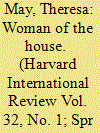

|
|
|
|
|
|
|
|